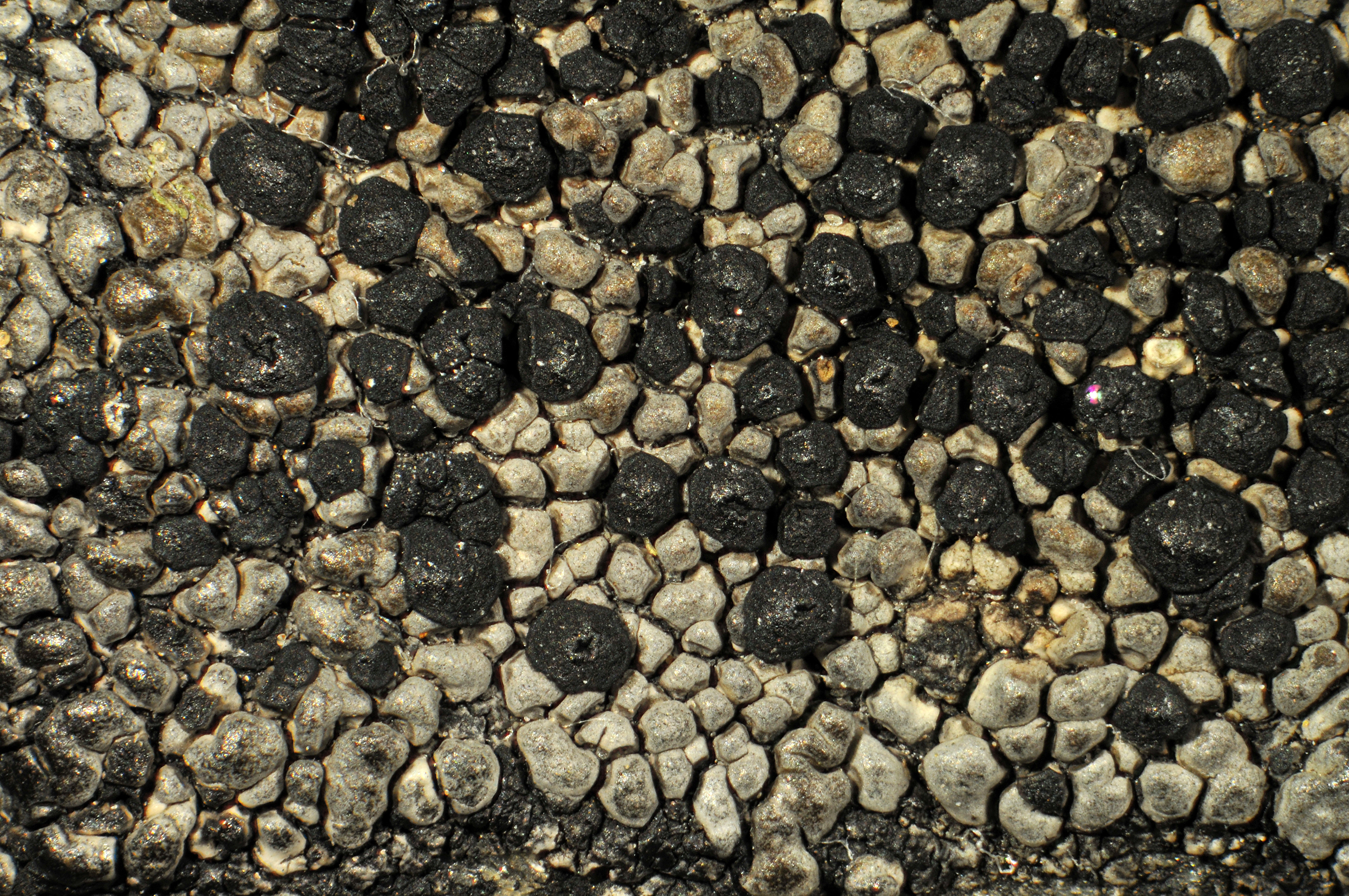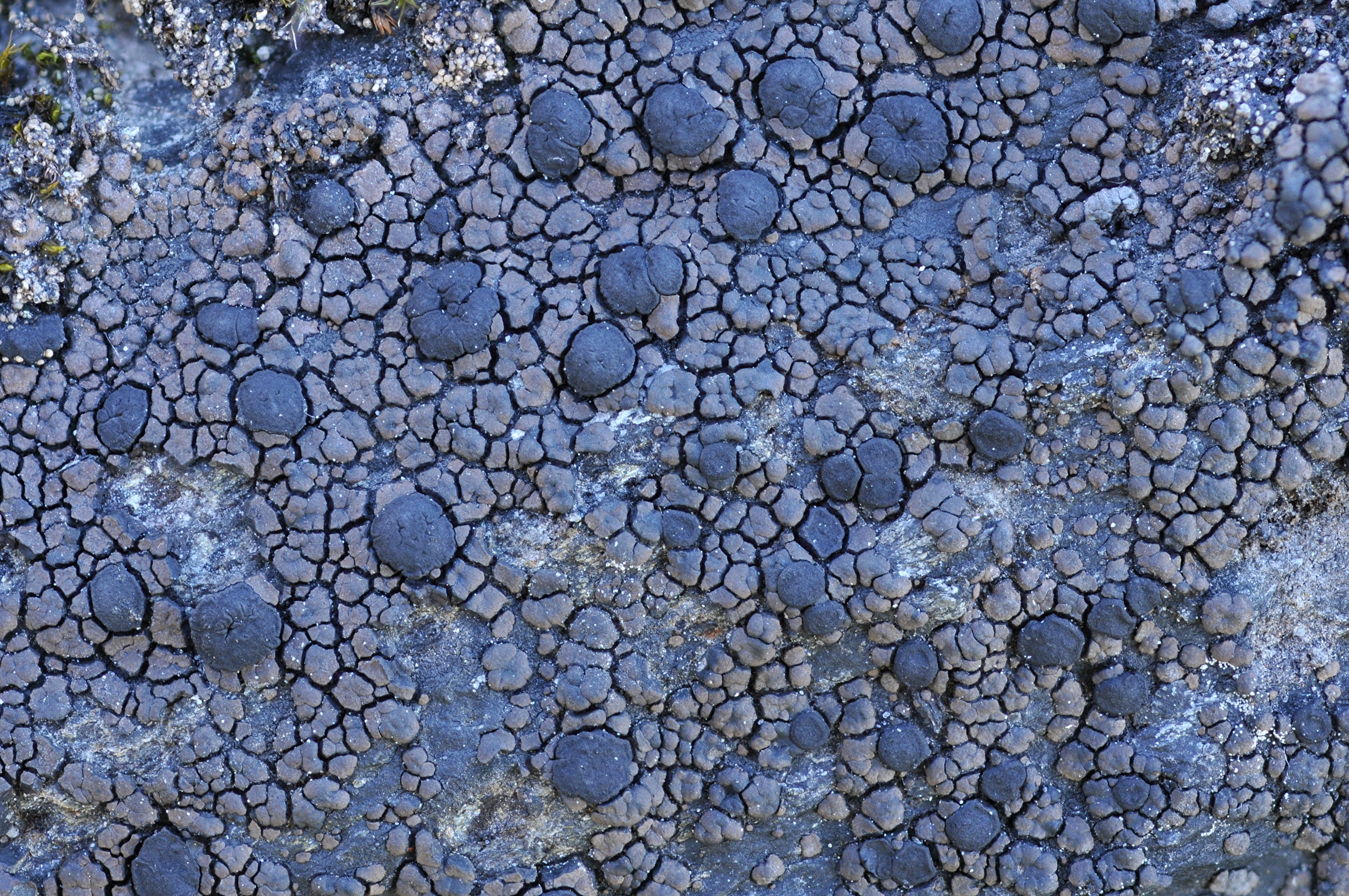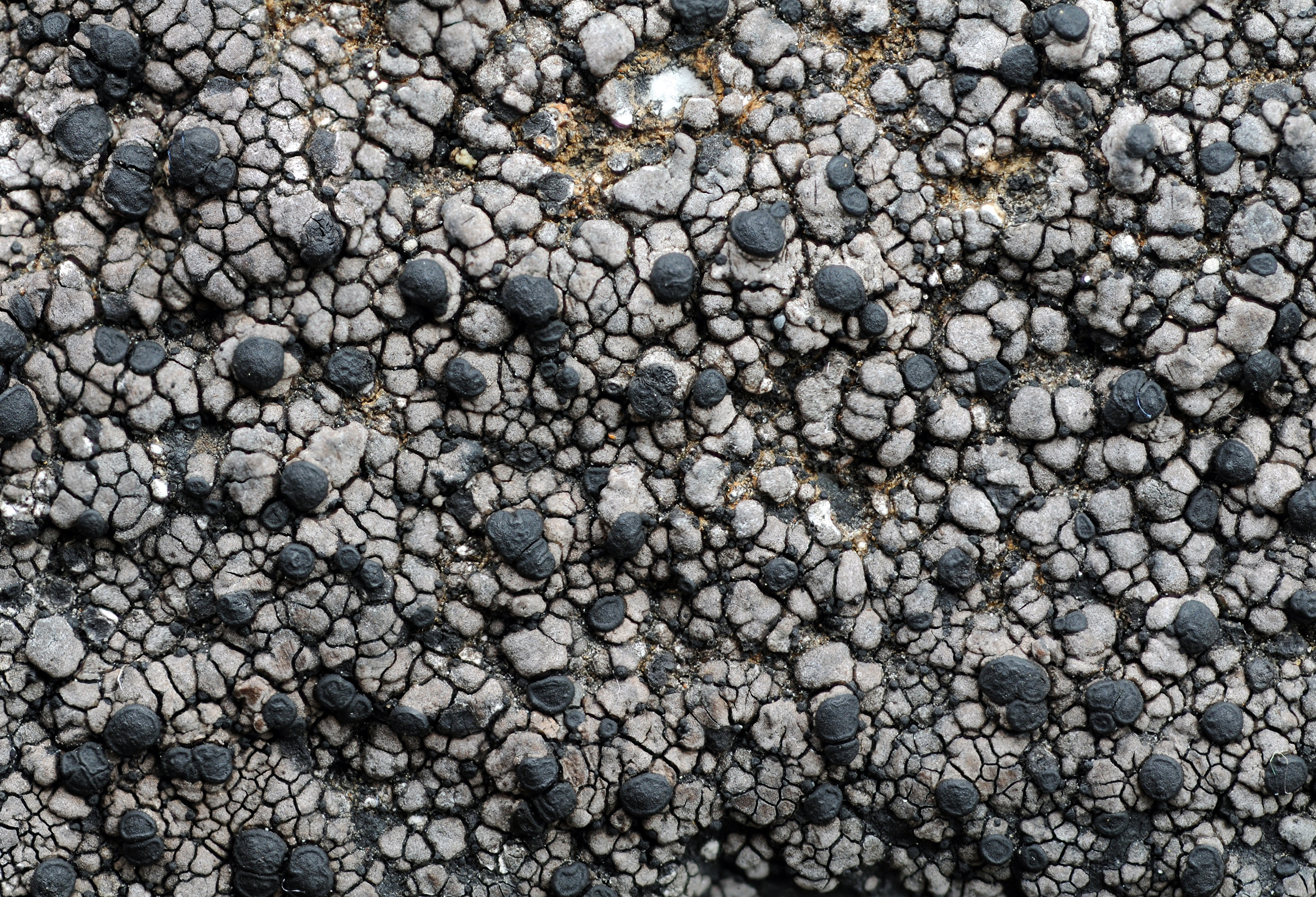Rhizocarpon copelandii
- Innhold
- Morphology
- Chemistry
- Habitat
- Comment
- Look-alikes
Morphology
Thallus areolate, up to 10 cm diam.; hypothallus well developed, black; areolae up to 1 mm diam., pale grey to dark grey or dark brown, dull or shiny, scattered or contiguous, orbicular to angular, slightly concave to strongly convex or bullate; medulla KI–. – Apothecia up to 1.5 mm diam., black, epruinose, more or less orbicular, remaining more or less plane and marginate or becoming convex and immarginate; excipulum brownish black in the rim, inner part paler brown, containing crystals dissolving in K, K+ yellow or K+ red (forming acicular crystals); hypothecium yellowish brown, K–; hymenium colourless, containing crystals dissolving in K; epihymenium olivaceous brown to greenish black, K– (turning more brightly green); ascospores 8 per ascus, 1-septate, soon becoming dark green or dark brown, 21–30 × 9–12 µm. – Conidiomata not seen.
Chemistry
Two chemical strains occur in Norway: 1) stictic acid (with trace of norstictic acid) and 2) norstictic acid (with trace of connorstictic acid); spot tests: medulla and exciple PD+ orange and K+ yellow or PD+ yellow and K+ red, C–.
Habitat
On siliceous rock. Mainly in the mountains.
Comment
The species shows an extensive morphological variation. The areolae varies from pale grey to dark brown, from dull to shiny, and from slightly concave to bullate. These characters are apparently not correlated, and different types of areolae may be found in the same thallus. There are two chemical strains (stictic acid or norstictic acid as the main lichen substance), but this variation is not correlated with the morphological variation. The apothecial anatomy of this species, however, is homogeneous. Dull, dark brown specimens containing stictic acid are often difficult to distinguish from the morphologically rather homogeneous species R. jemtlandicum. The two species differ mainly in the shape of the areolae, which, in R. jemtlandicum are somewhat larger, less convex, more contiguous, and often with a faint grey pruina. In R. badioatrum, the epithecium is reddish brown, K+ red, and crystals are absent.


